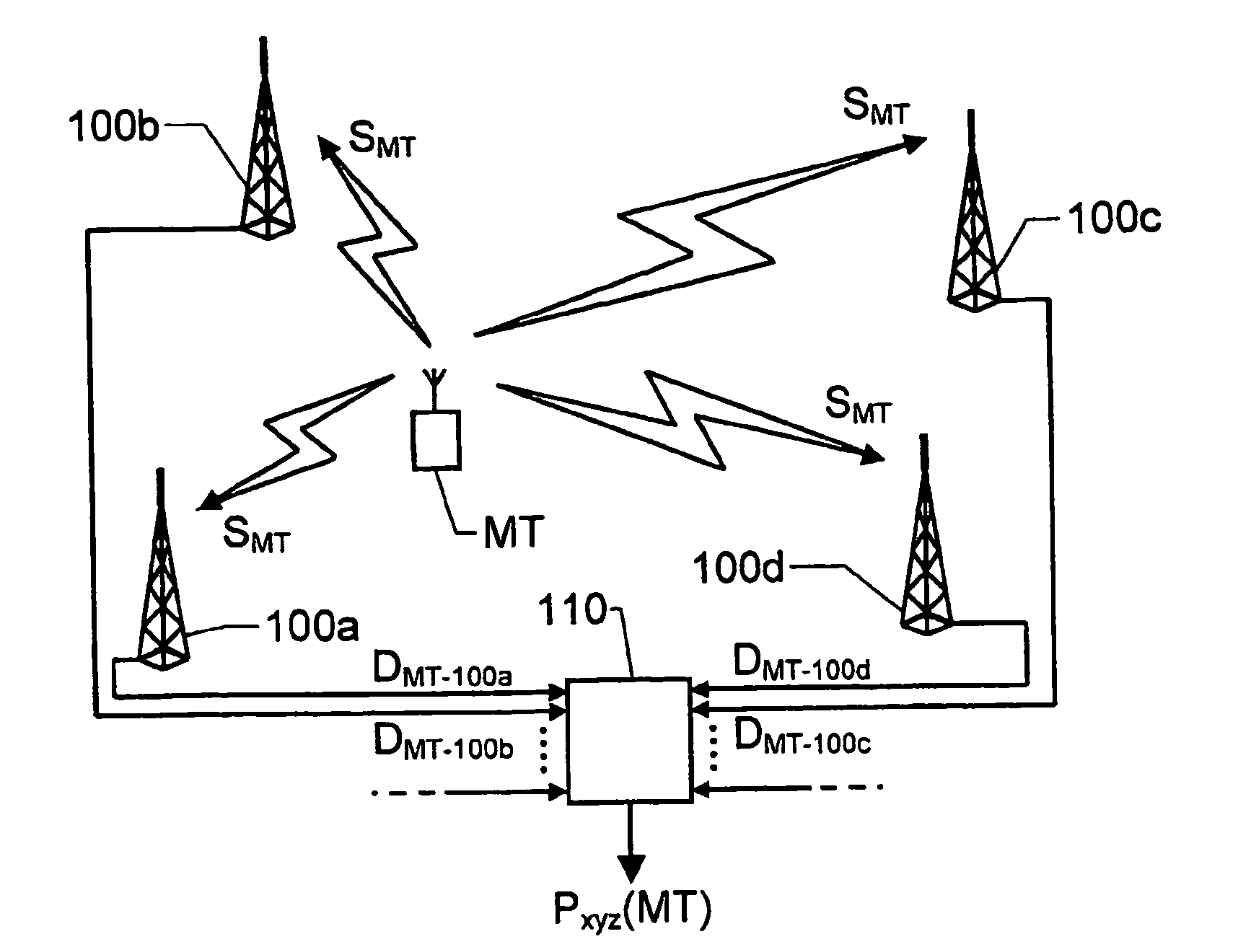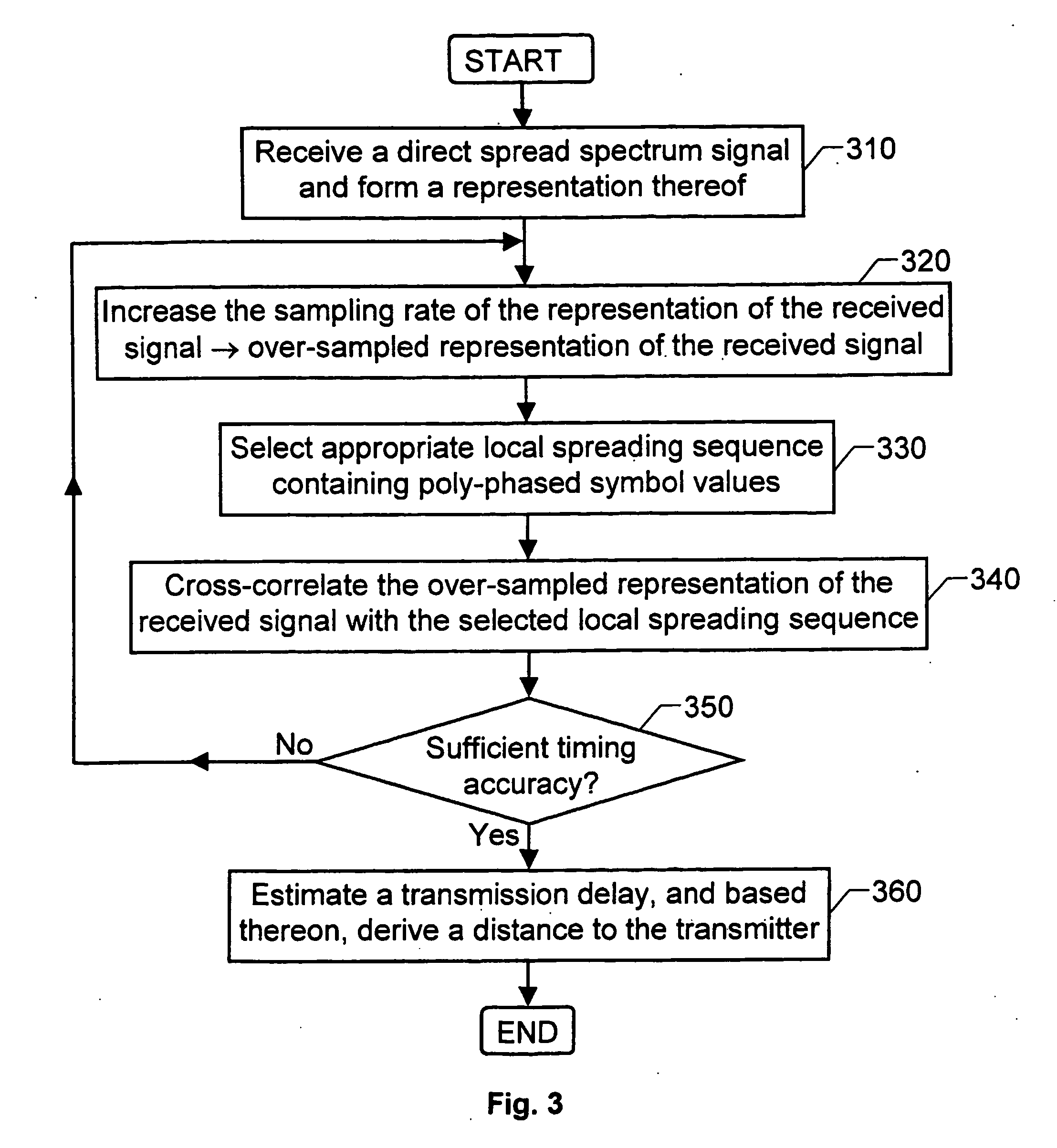Radio Signal Positioning
a radio signal and positioning technology, applied in the direction of duplex signal operation, using reradiation, instruments, etc., can solve the problems of system performance degradation, system suffers significant inaccuracy, system tends to be highly inaccurate in urban environments, etc., to achieve simple and robustness, and accuracy can be made very high
- Summary
- Abstract
- Description
- Claims
- Application Information
AI Technical Summary
Benefits of technology
Problems solved by technology
Method used
Image
Examples
Embodiment Construction
[0032]A proposed system is shown in FIG. 1. Here, a transmitter MT (e.g. a uniquely identifiable unit attached to a soldier) is presumed to be located in an area where a signal SMT transmitted from the transmitter MT can be received by a plurality of sensors, say four, namely 100a, 100b, 100c and 100d respectively. The geographical position of each sensor is known with a high accuracy. According to a preferred embodiment of the invention, each of the sensors 100a, 100b, 100c and 100d determines a respective distance DMT-100a, DMT-100b, DMT-100c and DMT-100d to the transmitter MT based on a registered transmission delay of the signal SMT. The distance data DMT-100a-DMT-100d is then forwarded from the sensors 100a, 100b, 100c and 100d to a central node 110, where the data is collected and used to calculate the transmitter's MT position by means of triangulation or similar technique, and with reference to the positions of the sensors 100a, 100b, 100c and 100d. Generally, the transmitte...
PUM
 Login to View More
Login to View More Abstract
Description
Claims
Application Information
 Login to View More
Login to View More - R&D
- Intellectual Property
- Life Sciences
- Materials
- Tech Scout
- Unparalleled Data Quality
- Higher Quality Content
- 60% Fewer Hallucinations
Browse by: Latest US Patents, China's latest patents, Technical Efficacy Thesaurus, Application Domain, Technology Topic, Popular Technical Reports.
© 2025 PatSnap. All rights reserved.Legal|Privacy policy|Modern Slavery Act Transparency Statement|Sitemap|About US| Contact US: help@patsnap.com



